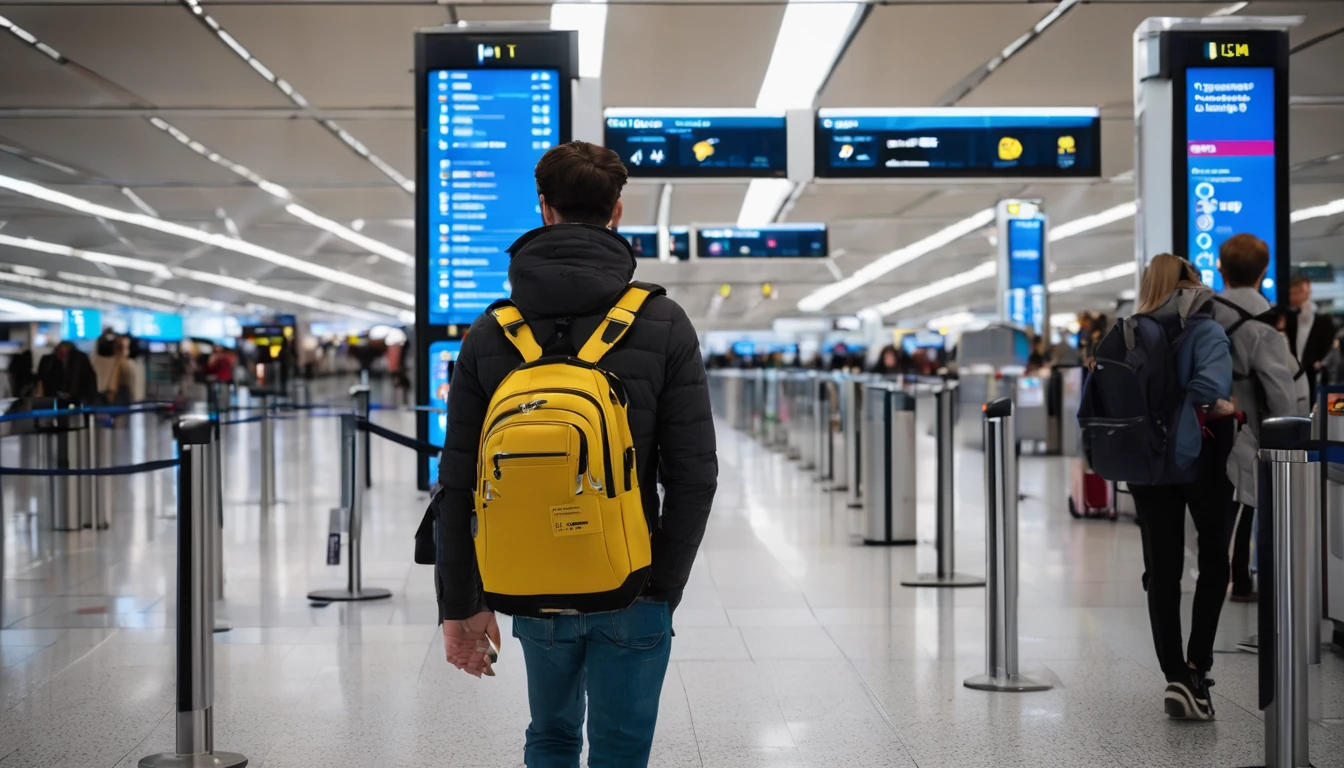Planning a semester abroad shouldn’t mean juggling short-term SIMs or guessing your data needs every few weeks. Simology’s new Student Saver Plans are built for study terms and placements, with long-validity eSIMs that last 90, 120, or 180 days. You get one activation, predictable data, and better value than stacking monthly bundles. Choose single-country coverage (like the US, France, Italy or Spain) or multi-country regional plans (Western Europe or North America) depending on your itinerary. We’ve also streamlined student verification so you can unlock student-only pricing without hassle. Below, you’ll find a quick plan overview, region-by-region guidance, a clear verification flow, installation steps, and practical data budgeting tactics to make your allowance last from orientation to finals. If you’re organising for a cohort or exchange group, there are group options too. Start by checking where you’re headed on our Destinations page, then pick the plan length that matches your term dates.
Student Saver Plans at a glance (90 / 120 / 180 days)
Think of these as “set-and-forget” eSIMs for the whole term. Each plan gives you a fixed data allowance with long validity and simple top-ups.
- 90 days (Quarter)
- Best for: Short exchanges, internships, language courses, or mid-term travel.
- Typical data options: 20–50 GB total, depending on country/region.
- Good to know: Ideal if you’ll use campus Wi‑Fi heavily and only need mobile data for maps, messaging, and occasional hotspotting.
- 120 days (Semester)
- Best for: Standard semester abroad or teaching placements that run over three to four months.
- Typical data options: 30–80 GB total, with optional top-ups if you stream or hotspot.
- Good to know: The sweet spot for most students—enough headroom for study weeks, weekend trips, and exam crunch time.
- 180 days (Extended Semester)
- Best for: Extended placements, double-term programmes, or combining study with travel before/after term.
- Typical data options: 50–120 GB total, with the flexibility to add more if needed.
- Good to know: Maximum convenience—activate once and forget about expiry until the end of your programme.
Pro tips: - If you’re travelling across multiple countries, pick a regional eSIM to avoid swapping. For example, Esim Western Europe for Schengen travel or Esim North America if you’ll be moving between Canada, the US, and Mexico. - Heavy video users (TikTok, YouTube, Reels) should lean towards mid-to-high data options or plan on a mid-term top-up.
Choose coverage by destination
Pick the footprint that matches your itinerary. You can browse all footprints on Destinations, or jump straight to common student picks:
- United States: Esim United States
- Ideal if you’ll mostly stay on one US campus with weekend trips.
- Consider a regional option (Esim North America) if you’ll cross into Canada or Mexico.
- Western Europe: Esim Western Europe
- Best for Erasmus students or anyone city-hopping across Schengen countries.
- Avoids the need for multiple local SIMs and inconsistent roaming policies.
- France: Esim France
- Good for single-country study with frequent reliance on campus Wi‑Fi.
- If you’ll pop into neighbouring countries, consider Western Europe instead.
- Italy: Esim Italy
- Solid for city and regional travel within Italy; upgrade to Western Europe for weekend trips to nearby countries.
- Spain: Esim Spain
- Great for students staying in Spain for the term; again, Western Europe suits multi-country travel.
- North America (regional): Esim North America
- Ideal for US/Canada exchange pairs and cross-border research trips.
When to choose single-country vs regional: - Single-country: You’ll stay mostly in one country and want the best-value per GB in that footprint. - Regional: You plan multi-country weekends or fieldwork. The convenience of one eSIM usually outweighs the slight premium.
Student verification: quick and privacy-conscious
Unlock student pricing in minutes. Here’s how the verification flow works:
1) Create your Simology account - Sign up with the email you actively use. If you already have a university email, use it—it may auto-verify.
2) Select your plan - Choose the 90/120/180-day option and your destination footprint.
3) Verify your student status - Option A: University email verification - We’ll send a code to your .edu/.ac or institution-issued address. Enter the code to verify. - Option B: Document verification - If you don’t have a university email, upload proof such as your student ID card or current enrolment letter. Ensure your name, institution, and validity dates are visible.
4) Get approval - Most email verifications are instant. Document checks typically complete within a business day. We’ll notify you by email.
5) Apply discount and checkout - Your student rate is automatically applied. Complete checkout to receive your eSIM activation details.
Notes: - Not sure if you qualify? Exchange acceptance letters usually count. If you’re under 18, a guardian can still pay from their account while you verify your student status. - If you’re purchasing for a cohort, see the group options in For Business or partner with us via the Partner Hub.
Install and set up your eSIM: 5-minute checklist
Before you leave: - Check that your phone is unlocked and eSIM‑compatible. - Update iOS/Android to the latest version over Wi‑Fi. - Download offline maps for your host city/region (Google Maps, Apple Maps). - Save your eSIM QR code/email and your Simology account login offline.
On activation day: 1) Connect to reliable Wi‑Fi. 2) Open your phone’s Mobile/Cellular settings. 3) Add eSIM via QR code or activation code. 4) Label your lines (e.g., “Semester Data” for the eSIM; keep your home SIM as “Home” if you’ll retain it). 5) Set the eSIM as “Mobile Data” and enable “Data Roaming” for the eSIM profile. 6) Keep your home SIM for calls/SMS if needed; set “Default Voice Line” accordingly. 7) Confirm APN settings auto-fill (most devices do this; we’ll include details in your activation email if manual entry is required). 8) Test with a web page and a maps search.
Pro tips: - If you plan to retain your home SIM for 2FA, turn off “Mobile Data” for the home SIM to avoid unexpected roaming charges. - Add a data usage widget or shortcut to your home screen so you can check your remaining balance quickly.
Budget your data across a semester
Stretch your allowance without feeling restricted. Adopt these habits in week one:
- Lock in your streaming quality
- Set YouTube/Netflix/Spotify to “Data Saver” or a capped resolution (480p/720p) on mobile.
- Disable “Autoplay” on social apps.
- Control background data
- iOS: Low Data Mode on the eSIM line; restrict background app refresh per app.
- Android: Data Saver + per‑app background data limits.
- Optimise maps and travel apps
- Download offline areas and transit schedules.
- Cache language packs in translation apps.
- Messaging and media
- Disable auto‑download for photos/videos in WhatsApp/Telegram/Signal.
- Use “compress images” options where available.
- System updates and backups
- Restrict cloud backups and OS/app updates to Wi‑Fi only.
- Pause auto‑upload of photos over mobile data.
- Hotspot wisely
- Cap hotspot usage to specific tasks (submitting coursework, cloud sync).
- Avoid streaming or large updates over tethering.
- Schedule Wi‑Fi
- Favourites: campus, library, residence halls, cafés you trust.
- Use a password manager to store Wi‑Fi credentials securely.
- Track and alert
- Enable data usage alerts on your device (e.g., warn at 75%, 90%).
- Check your Simology dashboard weekly; top up proactively before exams or travel weeks.
Rough planning guidance: - Light user (messaging/maps/email): 3–5 GB/month. - Moderate (social + some streaming/hotspot): 8–15 GB/month. - Heavy (daily video, frequent hotspotting): 20–30+ GB/month. Match your 90/120/180-day plan to your monthly pattern times the number of months, then add a 10–20% buffer for exam and travel peaks.
Top-ups, pauses, and managing your plan
- Top-ups
- Add data instantly in your Simology account. Your validity remains; added data rolls into the current term window.
- Pause/suspend
- If you have a mid-term break away from your destination, contact support to discuss options. Eligibility varies by footprint.
- Data rollover between semesters
- If you’re continuing for another term, look for renewal offers. Some footprints support carryover when you renew before expiry.
- Device changes
- eSIMs are designed for a single device. If you must change phones mid-term, contact support—we’ll advise based on your device and plan.
- Fair use
- Long-validity plans include reasonable use policies to protect network quality. Heavy tethering may be deprioritised.
Regional vs single-country: scenarios
- You’re based in Paris with weekend trips to Belgium, Netherlands, and Germany
- Pick: Esim Western Europe, 120 days, mid‑to‑high data.
- Why: Seamless cross-border use, no SIM swaps.
- You’re in Los Angeles all term with one conference in Vancouver
- Pick: Esim North America, 120 days, moderate data.
- Why: Coverage across the US and Canada with one eSIM.
- You’re in Bologna with mostly on-campus life and residence Wi‑Fi
- Pick: Esim Italy, 90 or 120 days, low‑to‑moderate data.
- Why: Best value for single-country usage.
- You’re doing a Spanish language course, then touring Portugal and France
- Pick: Esim Western Europe, 180 days if you’ll travel before/after classes.
- Why: One plan across multiple countries for the full window.
- You’re on a US exchange with heavy campus Wi‑Fi but frequent weekend road trips
- Pick: Esim United States, 120 days, moderate data plus a planned top‑up in mid-term.
For group organisers, faculty leads, and societies
If you’re coordinating eSIMs for an exchange cohort, summer school, or a student society trip: - Centralised purchasing and distribution - Use Simology’s group tools to assign eSIMs and track activations. - Flexible billing - Pay centrally or distribute payment links to students. - Support and onboarding - We can provide a short guide for your pre‑departure briefing.
Start with For Business for group enquiries or explore partnership options in the Partner Hub if your institution wants ongoing access and rates.
Quick setup checklist before you fly
- Confirm eSIM compatibility and unlock status.
- Decide: single-country vs regional coverage.
- Match 90/120/180 days to your calendar (add a buffer week).
- Estimate monthly usage; pick your data tier with a 10–20% cushion.
- Complete student verification early to lock in pricing.
- Save your QR code and installation guide offline.
- Download offline maps and campus apps.
- Configure data saver modes on day one.
FAQ
1) Do I get a phone number with an eSIM? - Our Student Saver Plans are data‑first. Many students use apps (WhatsApp, FaceTime, Messenger) for calls and messages. If you need local voice/SMS, contact support for options available in your destination.
2) Can I keep my home SIM active for calls and texts? - Yes. Set your eSIM as the data line and keep your home SIM for voice/SMS/2FA. Turn off mobile data on the home SIM to avoid roaming charges.
3) Will my eSIM work if I travel to a neighbouring country? - Single‑country eSIMs are for use in that country only. Choose a regional plan like Esim Western Europe or Esim North America if you’ll cross borders.
4) Can I use hotspot/tethering? - Yes, within fair‑use limits. Regular study tasks are fine; avoid large downloads or extended HD streaming over hotspot to conserve data.
5) What happens if I run out of data mid‑term? - You can top up instantly in your Simology account. Your plan validity (90/120/180 days) remains unchanged.
6) I don’t have a .edu/.ac email. Can I still get the student rate? - Yes. Upload a valid student ID or enrolment letter matching your name and current term dates during verification.
Next step: Check your destination and pick your Student Saver Plan length on our Destinations page.




